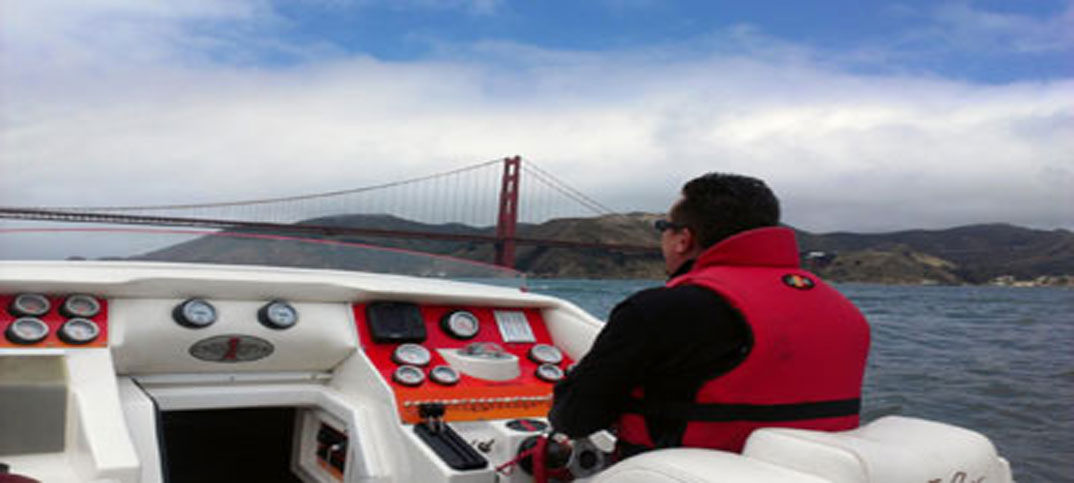Wherever you end up when you travel with your sportboat, careful preparation and planning are essential. As members of the “boating press,” we often dole out advice about boating safety and how everyone should listen to and apply our recommendations. But, do those of us who write about all this boating stuff really own boats and go boating? And when we do, do we take our own advice?
For as long as I can remember, I have been attracted to boats, boating, and reaching for the horizon as fast as I could get there— only to be attracted to the next horizon. For the most part I have succeeded in staying on the water. While my financial resources have limited how fast I have gone, I have been fortunate enough to maintain a fairly steady course afloat and so far—knock wood—I have been relatively trouble free.
I recently returned to Florida after completing a 7,125-mile cross-country boating odyssey. For whatever reason, I decided it would be a great adventure to trailer my ’01 Cigarette 38-foot sportboat with my ’01 Ford F-350 truck to the Northwest, down into California, then through Nevada, Arizona, New Mexico, Texas, and so on, and finally back to Florida, my home state. Without question, my exposure to many different risks went up exponentially, and before I left, I recognized that I should properly prepare for this road trip to mitigate potential disasters before I departed. With prevention as the primary objective, we prepped the boat. Of course, I had just rebuilt both engines and all appeared to be good with primary power and drives, which were recently inspected. Now it was time to create a checklist to verify that all was operational onboard. Remember, accidents don’t just happen. The devil is always in the details. I went with the following list. Navigation lights, bilge bumps, and the anchor: All required safety equipment was checked before we left home and nicely stowed. Spare parts: If some is good, more is better. Water pumps, starters, header gaskets, fuel pumps, gasket material, plugs, and tools— we brought them all. Trailer safety: The idea of trailering anything more 7,000 miles justifiably had me thinking about the condition of my trailer. So I replaced all the wheel bearings, even if they didn’t need it, and the old ones went into the trailer toolbox for spares. New tires were installed as needed, and we carried four spares. The trailer brakes were checked, parts replaced as required, and everything checked and rechecked. The truck was serviced and received new brake pads and the addition of some extra gear to include emergency lights, markers, new bottle jacks, extra hitch balls, mounts, and straps. I also brought along extra trailer brake parts, just in case.
Traveling around the country and boating on different lakes, bays, and sounds presents challenges and potential safety pitfalls. I knew it wouldn’t look good for Sportboat’s safety expert to have an accident, so I was extra cautious and aware. Of the 30 days away on this trip, the boat was in the water for 15 of them. While we did experience some mechanical breakdowns with the boat, nothing was significant enough to cause more than about an hour’s delay.
Across the nation and, I suspect, the world, boat ramps tend to bring out the usual less-than-competent suspects and the calamities they create. To help prevent such unfortunate incidents, I always walked the ramp before I used it. A stepped-bottom boat can hang up on the trailer bunks, for example, and if you
are not careful, you can drive beyond the end of the ramp to get your boat wet enough to launch. The ramp I frequent near my home in Fort Lauderdale has had numerous calls to recover boat trailers that have gone beyond the end. All the power in the world will not bring the front axle up and over the final underwater curb. So I always looked for the end of the ramp, the structural quality of the adjacent dock, and the depth of water beyond the ramp. It’s also a great idea to check the tides or, on lakes, the water level, as well as the current.
Likewise, mooring in unfamiliar areas can bring unique challenges. One of my goals on this trip was to go boating, not to plan much in advance but just figure it out as we went. In many ways, I wanted to see how accessible and ready the infrastructure was to support boating. I learned quite a bit. The complimentary guest dock at the Port of San Francisco, for example, is a great dock in a great location. But the surge coming from San Francisco Bay was significant. Appropriately sized fenders, long spring lines, proper cleats, and hardware allowed us to safely and comfortably moor.
When we did experience a problem, both on the water and on the road, the severity of the problems was lessened because we had prepared. We had two trailer tire blowouts, one at the beginning of the trip and one near the end of it. Both were insignificant because we had a proper wrench, jack, and blocks at the ready, and we were able to change tires in no time. Unexpected issues did occur, of course. After leaving Lake Tahoe in Northern California, for example, I did the customary double-check of everything, and we were off down Donner Pass to Sacramento. Of course, during heavy Sunday homebound traffic from the lake we lost the trailer brakes. Pulling over at a safe spot for a quick check, I found a broken brake line. I just happened to have extra brake lines in the trailer toolbox, and we were back under way with brakes in about 40 minutes.
The great takeaways from the trip were the people we met. Except for a few snobs we encountered on Lake Tahoe, everyone was wonderful. The brief effects of those who snubbed us at Tahoe were quickly erased by the many gracious people who went out of their way to lend a hand or eagerly recommend some don’t-miss stop along the way. Here’s something cool: The lakes of Northern Idaho, specifically Pend Oreille and Coeur d’Alene, had loaner life-jacket stands at each boat ramp. It’s a completely free program based on the honor system that enables sportboat owners to borrow a life jacket and return it later in the day or the weekend. Unlike what happens in South Florida, when we were stopped by the United States Coast Guard or the local police or wildlife services, all they wanted to see was our safety gear. No searches, demands, or speeches about speed and mammals, only requests for life jackets, fire protection, and visual distress signals. Environmental safety was also a highlight of the trip, as we
stopped at all the invasive aquatic species inspection areas along the way. Montana, Idaho, Oregon, and Lake Tahoe all gave us the once-over to verify we were not transporting any live organisms to their pristine waters. Safety certainly prevailed on our trip, and the waterways, as well as almost everyone we met in our travels, was remarkable. The investment of time and money toward being prepared made the trip wonderful and eventful without unfortunate casualties. Being ready for anything enabled us to stress about nothing.





